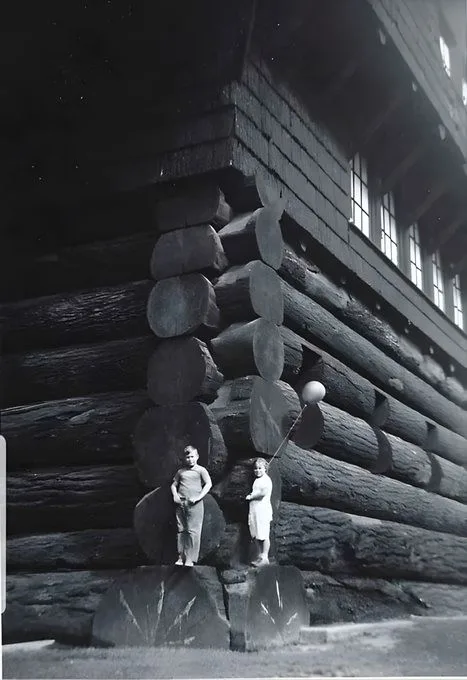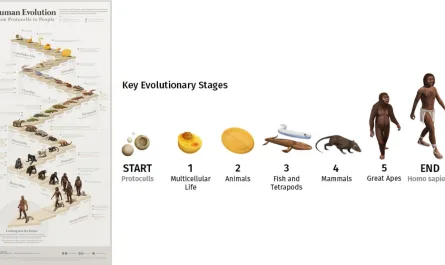In the heart of Portland, Oregon, once stood a monument to the Pacific Northwest’s boundless natural wealth—a colossal log cabin known as the Forestry Building. Erected in 1905 for the Lewis and Clark Centennial Exposition, this architectural marvel was celebrated as one of the largest log structures ever built. Its towering Douglas fir columns, intricate wooden arches, and cathedral-like interior captivated visitors, embodying the region’s deep connection to its forests. Though it stood for nearly six decades, a devastating fire in 1964 reduced this “Temple of Timber” to ashes, leaving behind only memories, photographs, and a legacy that continues to resonate in Portland’s history.

A Grand Showcase for the Lewis and Clark Exposition
The Forestry Building was conceived as a highlight of the 1905 Lewis and Clark Exposition, a world’s fair held in Portland to celebrate the centennial of the famous expedition. The event aimed to spotlight the Pacific Northwest’s resources, and no structure did so more boldly than the Forestry Building. Designed to showcase Oregon’s thriving timber industry, it was constructed using enormous Douglas fir logs, some measuring up to six feet in diameter and stretching 54 feet in length. These massive timbers, sourced from the region’s ancient forests, were a testament to the strength and abundance of Oregon’s natural resources.
The building’s design was both rustic and regal. Its exterior featured a log facade that blended harmoniously with the surrounding forest, evoking a sense of unity with nature. Inside, the structure opened into a vast, cathedral-like space, with soaring log columns and detailed wooden arches that created an awe-inspiring atmosphere. The scale was staggering—visitors often described it as stepping into a forest transformed into a palace. The Forestry Building wasn’t just a structure; it was a bold statement about the region’s identity and its reliance on timber as an economic and cultural cornerstone.
A Celebration of Timber and Craftsmanship
The interior of the Forestry Building was as impressive as its architecture. It housed exhibits that celebrated the Pacific Northwest’s forestry industry, showcasing the versatility and beauty of its woods. Giant logs were displayed alongside handcrafted furniture, intricate wood carvings, and samples of various tree species, from Douglas fir to cedar. These exhibits highlighted not only the raw power of the region’s forests but also the skill of its craftsmen, who transformed raw timber into functional and artistic creations.
The building itself was a living exhibit. Its massive logs, left largely in their natural state, demonstrated the durability and aesthetic appeal of Oregon’s timber. Visitors marveled at the sheer size of the logs, some of which were so large they seemed almost mythical. The Forestry Building didn’t just tell the story of Oregon’s forests—it invited people to walk through it, touch it, and feel the weight of the region’s natural heritage.
Beyond its role in the exposition, the building became a symbol of Portland’s pride. It stood as a reminder of the city’s roots in the timber industry, which fueled its growth in the late 19th and early 20th centuries. For locals and visitors alike, the Forestry Building was a source of wonder, blending raw natural beauty with architectural ingenuity.
A Tragic End in Flames
For nearly six decades, the Forestry Building stood as a beloved landmark in Portland. After the Lewis and Clark Exposition ended, it was repurposed for various uses, including as a museum and event space, preserving its role as a community gathering place. But on August 17, 1964, tragedy struck. A fire, likely sparked by an electrical fault, tore through the structure with ferocious speed. The dry, aged timbers that had made the building so iconic also made it vulnerable. Despite efforts to save it, the blaze consumed the entire structure in a matter of hours, leaving behind only smoldering ruins.
The loss of the Forestry Building was a profound blow to Portland. For many, it was more than just a building—it was a symbol of the city’s history, its connection to the land, and its pioneering spirit. The fire erased a tangible link to the past, and the community mourned the destruction of a structure that had once drawn thousands to marvel at its grandeur. Black-and-white photographs, preserved in archives, are all that remain of this once-mighty log cabin, capturing its towering logs and intricate details for posterity.
A Legacy in Portland’s History
Though the Forestry Building is gone, its legacy endures. It remains a powerful reminder of Portland’s deep ties to its forests and the timber industry that shaped its early economy. The building’s story is one of ambition, craftsmanship, and the fleeting nature of even the grandest creations. It also serves as a poignant reflection on the impermanence of wooden structures, no matter how sturdy they seem.
Today, the site where the Forestry Building once stood is part of Portland’s history, though no physical trace of the structure remains. Its memory lives on in local lore, historical records, and the collective imagination of a city that continues to celebrate its natural surroundings. The Forestry Building is often cited in discussions of early 20th-century log architecture, a style that blended practicality with awe-inspiring scale.
For those interested in exploring more, historical societies and archives in Portland, such as the Oregon Historical Society, house photographs and documents related to the Forestry Building. These records offer a glimpse into a time when the Pacific Northwest’s forests were not just a resource but a source of pride and wonder.
Conclusion
The Forestry Building was more than a log cabin—it was a temple of timber, a celebration of Oregon’s forests, and a testament to human ingenuity. From its construction in 1905 to its tragic destruction in 1964, it stood as a symbol of Portland’s identity and its unbreakable bond with the natural world. Though lost to fire, its story continues to inspire, reminding us of the beauty and fragility of the structures we build from the earth’s resources. The Forestry Building may be gone, but its place in Portland’s history is as solid as the massive logs that once held it aloft.





